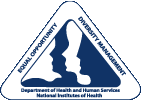Presentation - The Model EEO Program
The Model EEO Program
- EEOC Management Directive 715
(MD-715)
Title VII - Section 717
- Requires each federal agency to:
-
Make all personnel actions
free from discrimination based on race, color, religion, sex or
national origin
-
Maintain an "affirmative program of equal employment opportunity" for
all employees and applicants
-
Submit annual plan and/or updates
to EEOC for approval
Rehabilitation Act - Section 501
- Make all personnel actions free from discrimination based
on disability
- Maintain an "affirmative action program plan for
the hiring, placement and advancement of people with disabilities"
- Submit
annual plan and/or updates to EEOC for approval
Which Agencies are Covered?
- All executive branch departments and agencies, including the
U.S. Postal Service and the Postal Rate Commission
What Does MD-715 Require?
- Develop and maintain model EEO program
-
Ensure
all employment decisions are free from discrimination
-
Examine
employment policies, procedures and practices to identify and remove
barriers to equal opportunity
-
Develop plans to correct
identified barriers
-
Report plans and progress to EEOC
Essential Elements of a Model EEO Program
- Demonstrated commitment from agency leadership
-
Integration
of EEO into the agency's strategic mission
-
Management and
program accountability
-
Proactive prevention of unlawful discrimination
-
Efficiency
- Responsiveness
and legal compliance
I.
Element One: Demonstrated commitment from
agency leadership
- Equal employment opportunity must be:
- Embraced by agency
leadership
- Communicated through the ranks from the top down
- EEO
principles must be made a fundamental part of the agency's culture
-
Agency
head must issue annual EEO and anti- harassment policy statements
II. Element Two: Integration
of EEO into the agency's strategic mission
- EEO Director has regular access to agency head and senior management
- EEO
professionals are involved in all major human resources decisions
- EEO
programs have sufficient resources
- Managers and employees
are involved in the implementation of the agency's Title VII and
Rehabilitation Act programs
III. Element Three: Management and
program accountability
- Conduct regular internal EEO program audits
- Establish
procedures to prevent all forms of discrimination
- Evaluate
managers and supervisors on efforts to ensure equality of employment
opportunity
- Maintain effective reasonable accommodation procedures
- Maintain
clearly defined and fair personnel policies, selection and promotion
procedures, evaluation procedures, rules of conduct and training
systems
IV. Element Four:
Proactive prevention of unlawful discrimination
- Conduct a self-assessment on at least an annual basis to monitor
progress and identify areas where barriers may operate to exclude certain
groups
- Develop strategic plans to eliminate identified barriers
V. Element Five: Efficiency
- Maintain an efficient, fair and impartial complaint resolution
process
- Separate investigation and adjudication functions
from the legal defense arm of the agency
- Establish and encourage
the widespread use of alternative dispute resolution (ADR)
- Maintain
effective data collection systems on workforce, applicant flow
and complaint tracking
VI. Element Six: Responsiveness
and legal compliance
- Ensure full compliance with Title VII and Rehabilitation Act,
including EEOC regulations, orders and other written instructions
- Report
agency program efforts and accomplishments to EEOC
- Comply
with final EEOC orders for corrective action and relief
Sources for Information to Identify Potential Barriers
- Analyze
workforce statistics
- Review EEO complaints
- Talk
to EEO and human resources staff
- Talk to unions and advocacy
groups
- Conduct surveys, focus groups and exit interviews
- Review
studies by outside agencies
Some Employment Policies, Procedures and Practices That Should Be
Examined for Barriers
- Hiring
- Promotions and other internal selections
- Attainment
of supervisory and management positions
- Training opportunities
and developmental opportunities
- Performance incentives and
awards
- Disciplinary actions
- Separations
Plan to Eliminate Barriers
- Design corrective plan to address the identified causes of barriers
- Even
if barrier is job-related, explore alternatives that serve the same
purpose and that have less impact on a particular group of employees
- Progress
should be measurable and agency officials held accountable
- Periodic
reassessments should be done for need to adjust plan if necessary
- Report
plan and progress to EEOC annually
Additional Barrier Analyses Under the Rehabilitation Act
- Compliance with Executive Order 13164 and EEOC guidance for reasonable
accommodation procedures
- Compliance with Architectural Barriers
Act
- Accessibility of electronic and information technology
required by Section 508 of the Rehabilitation Act
Special Emphasis for Targeted Disabilities
- MD-715 requires agencies with 1,000 or more employees to:
- Establish goals for employment of individuals with targeted
disabilities
- Establish goals for the advancement of individuals with targeted
disabilities
- Show measurable progress each fiscal year
Further Information
Additional information will be available on this
web site as MD-715
is implemented.
Contacting OEODM
Office of Equal Opportunity & Diversity Management
2 Center
Drive, Third Floor
Bethesda MD 20892-0245
(301) 496-6301 tel.
(301)
496-9755 or 480-3122 tty
(301) 402-0994 fax
|





